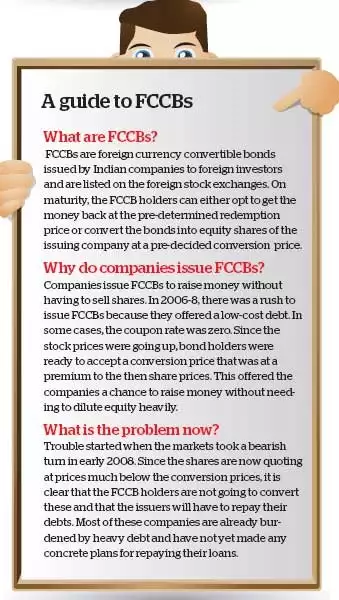Returns to scope It’s lecture notes of microeconomics Related to an economy of scale is an
Contents:




The costs of producing each electronic device in another building would be greater than just using a single manufacturing building to produce multiple products. Economies of scale are reductions in average costs attributable to production volume increases. They typically are defined in relation to firms, which may seek to achieve economies of scale by becoming large or even dominant producers of a particular type of product or service. A distinction can be made between internal and external economies of scales.
A manufacturing line for a consumer product or an automobile used to be setup for a particular product type to produce large volumes of the same product type. On the other hand, if we subject the production line to frequent change-overs, it will result in inefficiency. Many companies use the concept of SMED for quick and frequent changeovers to accommodate frequent change of product types. Another method is to design a flexible production line to accommodate multiple product types together.
Financials bounce back from Friday’s slide to lift Indian shares – Business Recorder
Financials bounce back from Friday’s slide to lift Indian shares.
Posted: Mon, 08 May 2023 05:01:12 GMT [source]
This way, producing black liquor helped save expenses on manufacturing the paper.
When the company begins to create an additional unit of output above a particular threshold, the average per-unit cost will rise. If multiple companies in the same industry produce similar goods, an industry may be able to determine the price of a product. Economies of scale are a crucial concept for any organization in any industry since they represent the cost savings and competitive advantages that larger businesses have over smaller ones. Newer forms of economies of scale have come about with technological advances and improved business practices. The extensive dependence upon computers and the use of the Internet allow small businesses to become efficient in ways previously thought impossible. Outsourcing business functions such as payroll or customer service can be a way to achieve greater output at less cost.
More Concepts and elements of business environment Questions
At some level, operations turn into too large to keep experiencing economies of scale. This forces firms to innovate, enhance theirworking capitalor remain at their present optimal degree of production. For example, if the company that produces the computer processors surpasses its optimum production point, the cost of each further unit could begin to extend instead of continuing to decrease. In this example, the producer is passing on the fee benefit of producing a bigger variety of computer processors onto firm ABC. There is an inverse relationship between the quantity of output of goods and providers and the fixed prices per unit to an organization.
However, scale and its respective economies or diseconomies can be achieved in families, sports, faith-based organizations or governments. Both internal and external factors affect the level of scale, while the nature of scale has evolved with new opportunities of technology and business practice. Economy of scope and economy of scale are two different concepts used to help cut a company’s costs.
But the merging of firms is possible only when factor inputs can be reused and assets could be shared. Sometimes the corporate can negotiate to decrease its variable prices as nicely. The fixed prices, like administration, are unfold over more models of production.
For example, fast food outlets have a lower average cost producing a multitude of goods than would separate firms producing the same goods. This occurs because the preparation of the multiple products can share storage, preparation, and customer service facilities . The theory of an economy of scope states the average total cost of a company’s production decreases when there is an increasing variety of goods produced. This happens as the expanded scale of manufacturing will increase the effectivity of the production course of.
work like scale economies, except that they account for advantages of producing multiple
The departments can be divided in term of broad areas, like production, sales, finance, accounting, material, research etc. This helps in supervision and in fixing responsibility to each department. Internal Economies are those which are open to a single factory, or a single firm independently of the action of other firms. They result from an increase in the scale of output of a firm and cannot be achieve unless output increases. In some situations, one product could be the byproduct of another; however, carry enough value for the producer to use it in sales. Thus, discovering a productive Market for such byproducts can effectively decrease costs and increase revenue.
In addition, the advantages of inner economies of scale for shoppers is probably not as spectacular as they seem. For a begin, economies of scale might not always result in decrease costs, as dominant firms could merely type a monopoly and enforce greater prices. It’s also price remembering that the environmental penalties of mass manufacturing can be significant, from pollution to e-waste. – One of the primary advantages of internal economies of scale is decreased costs, enabling companies to enhance their worth competitiveness in world markets.
It has also highlighted that in several industrial areas there exist several enterprises with varying sizes and organizational structures. This conflict, among the actual data and the conceptual opposition among economies of scale and competitiveness, has been termed the ‘Cournot dilemma’. Whereas the study is expanded, including the issues involving the growth of information and the structuring of interactions, it is possible to infer that economies of scale do not necessarily result in dominance. In reality, the comparative benefits resulting from the growth of the firm’s competencies and from the administration of dealings with suppliers and consumers might offset those supplied by the scale. Thereby it neutralizes the inclination to a monopoly implicit in economies of scale. This occurs when an organisation invests in modern technology which helps in lowering the cost of production.
As long because the LRAC curve is declining, then internal economies of scale are being exploited. With this method, the revenue of a country is calculated as its home revenue plus its oblique business taxes and depreciation, in addition to its net foreign issue earnings. Net international issue revenue is found by subtracting the payments made to foreigners from the funds made to Americans.
Get industry recognized certification – Contact us
This is usually taught that once we use a thing, before throwing we should think, how could it be recycled or we can bring the same thing again into use. This occurs when large organisations employ people with a special skill set that helps to maximize the profits of the organisation like an accountant or manager. This occurs when large organisations take a loan with a low rate of interest. The banks easily give them loans since they have good credibility. Similar to the Economies of Scale, Diseconomies of Scale is of two types- Internal Diseconomies of Scale and External Diseconomies of Scale. Scope means an area of study or coverage of the particular subject.
Republican debt-limit plan would cut US jobs, slow growth … – Business Recorder
Republican debt-limit plan would cut US jobs, slow growth ….
Posted: Mon, 08 May 2023 01:40:36 GMT [source]
Thus, firms employing less than 10,000 staff can potentially lower their average price of production by employing more employees. This is an instance of an exterior financial system of scale – one that affects an entire trade or sector of the economic system. The LRAC curve is the curve along which a firm would reduce its value per unit for every respective lengthy-run amount of output.
For instance, dairy farmers usually separate the milk into curds and whey, and the curds are turned into cheese. In this process, the farmers also acquire whey, which can be used as a high protein feed for their livestock. Thus, it decreases the cost of buying nutritional products for their animals. When the firm grows, management will find it harder to maintain control over the corporate operations. This, in turn, will diminish the efficiency of the company’s operations.
He instructed broad declines within the elements of production—corresponding to land, labor, and efficient capital—represented a constructive externality for all companies. Technical economies of scale outcome from efficiencies within the manufacturing course of itself. Manufacturing costs fall 70% to 90% each time the enterprise doubles its output. Economies of scale are the price advantages that a business can exploit by increasing their scale of production. Scale economies have brought down the unit costs of production and have fed by way of to lower costs for customers.
Economies of scope have a completely different meaning from what is conveyed by the economies of scale. It specifies an inverse relation between the average cost of a good and the level of output. Economies of scope do not mean that it is beneficial for a firm to produce different goods rather than one single good.
Business Economics – assignment answers
Figure 8.9 Relationship Between Short-Run and Long-Run Average Total Costs. The LRAC curve is discovered by taking the lowest common complete value curve at each level of output. Economy of scope offers a price advantage to a company when it produces a complementary vary of merchandise while specializing in its core competencies. Economy of scope is an simply misunderstood idea, especially since it seems to run counter to the concepts of specialization and scale economies. A large number of firms are concentrated in special export zones or industrial estates. The benefits of various infrastructures in such areas accrue to all firms to reduce their cost of production.
- ClearTax offers taxation & financial solutions to individuals, businesses, organizations & chartered accountants in India.
- It accepts no liability for any damages or losses, however caused, in connection with the use of, or on the reliance of its product or related services.
- In simple words, this term defines that the production of one product can decrease the cost of producing another relevant product.
In simple words, this economies of scale and economies of scope defines that the production of one product can decrease the cost of producing another relevant product. Although economies of scope can be characterized by efficiencies formed by differences, however, Economies of Scale can be characterized in terms of volume. Companies benefit from economies of scale when their production gets more efficient. Companies can attain economies of scale by expanding output while decreasing costs. This occurs because costs are dispersed among a greater number of commodities. In today’s market the manufacturer gives the freedom to the customer to customise his product so that he is able to derive value for the money spent by the customer.
Internal Factors – This happens when companies work on internal factors to lower the cost of production. Changes in decisions in the management of a firm or increases in the size of the company are internal factors that affect economies of scale. Large companies can have an advantage because they can negotiate discounts while purchasing bulk materials for production, and use a special and advanced technology which generally requires a higher capital. A company can achieve economies of scale in two ways – internal and external.
- They result from an increase in the scale of output of a firm and cannot be achieve unless output increases.
- The greater the quantity of output produced, the lower the per-unit fixed cost.
- But, when scale of production expands and firms hire more capital and labour, their total output increases more than proportionately till the optimum size of the firm is reached.
- The Internal Economies of Scale are the internal factors that can be controlled by the organisation to lower the cost of production.
In the first case, a company can rearrange their business equipment, man force and other production factors to increase production efficiency, thus lowering costs. Secondly, a company can grow in size, compared to its business competitors, and conduct negotiations for bulk purchases of raw materials, thus gaining an advantage over production costs. Another type happens when firms buy in bulk and receive discounts for his or her large purchases or a lower value per unit of input. Cuts in administrative prices could cause marginal productivity to decline, resulting in economies of scale. An internal economic system of scale measures a company’s efficiency of production.
Internal economies of a scale measure a company’s efficiency of production and occur because of factors controlled by its management team. The main source of managerial economies is specialization and division of labour. It can be achieved by delegating the decision making to right persons and ensuring supervision.
A factory may decide to speed up its production process, resulting in marginal cost reductions. When it comes to economies of scale, the size of the business generally matters. Internal economies of scale are the result of management actions, whereas external economies are the result of external forces. Economies of scale are cost savings that come when a company’s output increases. Fixed costs, such as administration, are spread among multiple units of output. A corporation that benefits from economies of scale may be able to negotiate reduced variable expenses as well.


Economies of scope are fiscal parameters which will go onto make parallel production of various goods and products that are more economical when compared to producing just one item. Premkumar T is the winner for this question for describing both the concepts and also providing examples of how the contradiction between economies of scale and customization can be managed. In the context of this topic, The ‘Kanban’ pull system approach needs to be mentioned since it compliments many of the other methods used to handle customization, by ensuring a demand driven supply and production. Banks are able to handle multiple needs of customers in a single counter or ATM by using appropriate technologies and multi-skilling. There is always space for customized product in the market and leads to growth of the business. I) Specialization of labour and more integrated technology boost production volumes.
The production strategy is one thing just like the reverse of the expenditure approach. The expenditure method initiatives forward from prices; the production method appears backward from the vantage of a state of completed economic activity. Technical economies of scale are achieved by way of the use of giant-scale capital machines or production processes.
Internal economies of scale occur when a firm reduces costs by increasing production. External economies of scale occur when an entire industry benefits from expansion; for example, through the creation of an improved transportation system, a skilled labor force, or by sharing technology. Income earned by all of the factors of manufacturing in an financial system consists of the wages paid to labor, the rent earned by land, the return on capital in the type of interest, as well as company income. These three approaches are sometimes termed the expenditure strategy, the output approach, and the revenue strategy. Economies of scale are price advantages reaped by corporations when manufacturing becomes efficient.